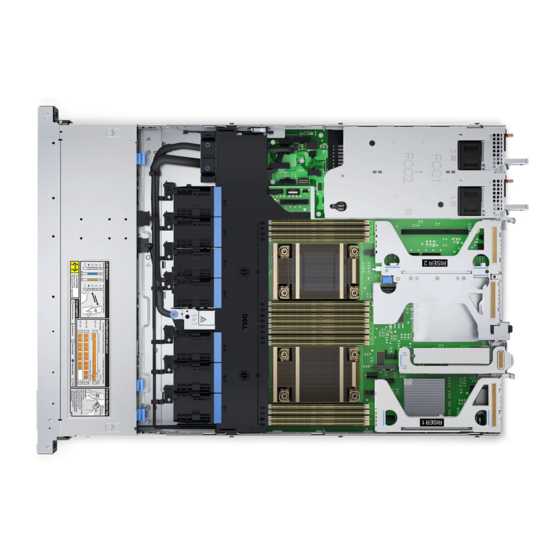Dell EMC PowerEdge R650xs 참조 매뉴얼 - 페이지 17
{카테고리_이름} Dell EMC PowerEdge R650xs에 대한 참조 매뉴얼을 온라인으로 검색하거나 PDF를 다운로드하세요. Dell EMC PowerEdge R650xs 25 페이지.

Table 17. Serial Communication details (continued)
Option
Redirection After Boot
System Profile Settings
To view the System Profile Settings screen, power on the system, press F2, and click System Setup Main Menu > System
BIOS > System Profile Settings.
Table 18. System Profile Settings details
Option
System Profile
CPU Power Management
Memory Frequency
Turbo Boost
C1E
C States
Memory Patrol Scrub
Memory Refresh Rate
Uncore Frequency
Energy Efficient Policy
Monitor/Mwait
Workload Profile
Description
Enables or disables the BIOS console redirection when the operating system is
loaded. This option is set to Enabled by default.
Description
Sets the system profile. If you set the System Profile option to a mode other than Custom,
the BIOS automatically sets the rest of the options. You can only change the rest of
the options if the mode is set to Custom. This option is set to Performance Per Watt
(DAPC) by default. Other options include Performance, Performance Per Watt (OS) and
Custom.
NOTE:
All the parameters on the system profile setting screen are available only when
the System Profile option is set to Custom.
Sets the CPU power management. This option is set to System DBPM (DAPC) by default.
Other option includes Maximum Performance, OS DBPM.
Sets the speed of the system memory. You can select Maximum Performance, Maximum
Reliability or a specific speed. This option is set to Maximum Performance by default.
Enables or disables the processor to operate in the turbo boost mode. This option is set to
Enabled by default.
Enables or disables the processor to switch to a minimum performance state when it is idle.
This option is set to Enabled by default.
Enables or disables the processor to operate in all available power states. C States allow the
processor to enter lower power states when idle. When set to Enabled (OS controlled) or
when set to Autonomous (if hardware controlled is supported), the processor can operate
in all available Power States to save power, but may increase memory latency and frequency
jitter. This option is set to Enabled by default.
Sets the memory patrol scrub mode. This option is set to Standard by default.
Sets the memory refresh rate to either 1x or 2x. This option is set to 1x by default.
Enables you to select the Uncore Frequency option. Dynamic mode enables the processor
to optimize power resources across cores and uncores during runtime. The optimization of
the uncore frequency to either save power or optimize performance is influenced by the
setting of the Energy Efficiency Policy option.
Enables you to select the Energy Efficient Policy option. The CPU uses the setting to
manipulate the internal behavior of the processor and determines whether to target higher
performance or better power savings. This option is set to Balanced Performance by
default.
Enables the Monitor/Mwait instructions in the processor. This option is set to Enabled for all
system profiles, except Custom by default.
NOTE:
This option can be disabled only if the C States option in the Custom mode is set
to disabled.
NOTE:
When C States is set to Enabled in the Custom mode, changing the Monitor/
Mwait setting does not impact the system power or performance.
This option allows the user to specify the targeted workload of a server. It allows
optimization of performance based on the workload type. This option is set to Not
Configured by default.
Pre-operating system management applications
17
